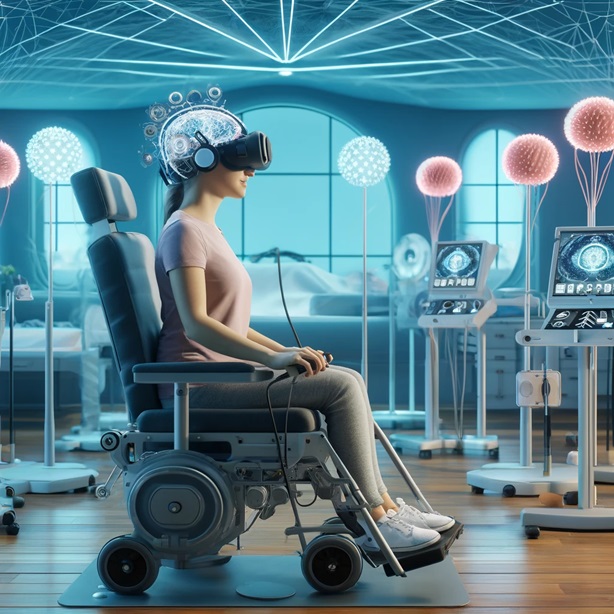Neuroplasticity After Injury

The Healing Power of the Brain
Neuroplasticity, or the brain’s ability to reorganize itself by forming new neural connections throughout life, is especially crucial after a brain injury. It underlies the brain’s capacity to recover and adapt, making it possible for brain training to significantly contribute to rehabilitation. This page delves into the science of neuroplasticity after injury and explores how various brain training techniques can aid in the recovery process, highlighting the resilience of the human brain and the innovative methods being used to harness its healing powers.
Brain Training as a Rehabilitative Tool
Brain training encompasses a range of activities designed to improve cognitive functioning. Post-injury, these exercises are tailored to help the brain relearn lost skills and develop new pathways for information processing. By repetitively practicing cognitive tasks, individuals recovering from brain injuries can strengthen their mental faculties, enhance memory, attention, and problem-solving skills, and accelerate their return to daily activities. Techniques such as spaced repetition and the use of mnemonic devices are often incorporated to improve retention and recall.
Customized Cognitive Rehabilitation
Each brain injury is unique, requiring a personalized approach to rehabilitation. Brain training programs can be customized to address specific cognitive deficits resulting from the injury. With the guidance of neuropsychologists and therapists, individuals can engage in targeted exercises that focus on their particular areas of need, thereby maximizing the benefits of neuroplasticity for recovery. This might include modular approaches that focus on distinct aspects of cognition like verbal fluency, spatial reasoning, or executive functioning.
Technology-Enhanced Brain Training
The advent of technology has brought about sophisticated brain training tools that offer interactive and engaging ways to rehabilitate. From virtual reality that simulates real-life scenarios to software applications that track progress, technology enhances the traditional brain training experience, making it more effective and measurable. For example, VR scenarios can be used to practice social skills, navigate environments, or manage tasks that require complex cognitive skills, providing a safe space for rehabilitation.
Incorporating Multisensory Stimulation
Multisensory stimulation, which involves engaging several senses during cognitive exercises, can enhance neuroplasticity and recovery. Activities that combine visual, auditory, and tactile elements can stimulate broader areas of the brain and foster a more holistic recovery experience. This approach is particularly beneficial in treating individuals who have suffered from sensory loss or motor function impairments.
The Importance of Support and Consistency
Recovery from a brain injury is a journey that requires support and consistency. Engaging in brain training activities regularly and maintaining a supportive environment are crucial for harnessing the power of neuroplasticity. Family, friends, and healthcare providers play a significant role in encouraging and facilitating this ongoing process of cognitive improvement. Support groups and peer-led communities also provide a vital network that can motivate and inspire individuals throughout their rehabilitation journey.
Conclusion
Neuroplasticity offers hope for recovery after a brain injury, and brain training is a pivotal part of harnessing this remarkable capacity. Through dedicated practice, the right tools, and a supportive network, individuals recovering from brain injuries can experience substantial improvements in cognitive function, leading to an enhanced quality of life and a more promising future. Continued research and innovation in rehabilitation techniques will further empower survivors and clinicians in their quest for cognitive restoration and enhancement.